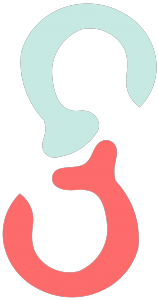How to Write An Effective Resume
A resume is a 1-2-page formal document that provides a high-level summary of your educational background, professional experiences (both paid and unpaid), co-curricular experiences, and competencies/skills. The purpose of a resume is to market yourself to an employer by concisely emphasizing your strengths, abilities, and skills in a way that demonstrates that you are the ideal candidate for the role to which you are applying. Ultimately, a resume is the first step that will assist you in obtaining an interview with a potential employer or supervisor (U of T Student Life, 2022). Although there is no standard way to write a resume, below are a few tips that you may find helpful:
Identify the core skills and competencies you possess. Highlight these in a way that corresponds to the particular knowledge, skills, and abilities the employer requires for a position. It is important to understand that a resume is not static—it should be modified regularly to reflect your development and must be tailored to each opportunity and the different needs of the prospective employer (U of T Student Life, 2022). For instance, if you are interested in applying to a neuroscience research position, it is necessary that you include relevant research experience, interpersonal skills, technical skills, and time and project management skills. It may be helpful to first organize your experiences into a chart format. This will assist in linking the skills you developed with the duties/responsibilities required for the specific role. For example:
| Employer’s Needs | Your Experience | Skills Developed |
| Analyze ideas and information | Entered a poster project competition where I worked with four classmates to research the effect of hippocampal damage on memory formation | Teamwork and collaboration Communicate clearly, both orally and in writingResearch, gather, analyze, and interpret data |
Keep your resume brief and use an attractive template. Companies may receive hundreds of applications for a job posting and oftentimes, most employers just take a quick glance to identify any keywords that match the job description. In fact, according to a study conducted by “TheLadders,” employers spend an average of 6 seconds reviewing a resume (Sanburn, 2012). Therefore, it’s necessary to be concise (i.e., avoid clutter) and to choose a resume layout that is visually appealing and has an organized and minimalistic design. Sample resume builders are linked below:
- https://www.livecareer.com/resume/builder
- https://www.jobbank.gc.ca/findajob/resume-builder
- https://www.indeed.com/create-resume
Outline your skills, experiences, and accomplishments into the conventional sections. Below are few tips on things to consider for each:
- Personal Information: Include your name, professional/institutional email, phone number, address, and LinkedIn URL or a link to a personal website.
- Education: List your degree/diploma, your program of study, and the institution. Include any scholarships, bursaries, awards, or certifications in this section (e.g., Dean’s List).
- Professional Experience: Outline relevant work experience (e.g., leadership positions, internships, research experience, etc.) in reverse chronological order. Include dates, the position title, the organization/company, and the location.
- Briefly highlight your roles and responsibilities (3-6 bullet points per job).
- Begin each bullet point with an action verb. This website includes a list of strong and impactful action verbs that will help you stand out.
- Quantitatively outline accomplishments, contributions, and results by using data or statistics (e.g., “Supervised a team of 20 …”; “Wrote a 50-page literature review paper…”).
- Volunteer, Extracurricular Activities, & Other Skills: Include clubs/professional associations, sports, musical abilities, hobbies, interests, skills (e.g., languages you speak, technical skills, etc.).
Sanburn, J. (2012, April 13). How to make your resume last longer than 6 seconds. Time. https://business.time.com/2012/04/13/how-to-make-your-resume-last-longer-than-6-seconds/.
University of Toronto. (2022). Resume and Cover Letter Toolkit. Career Exploration and Education. https://studentlife.utoronto.ca/wp-content/uploads/CC-Resume-and-Cover-Letter-Toolkit.pdf.


